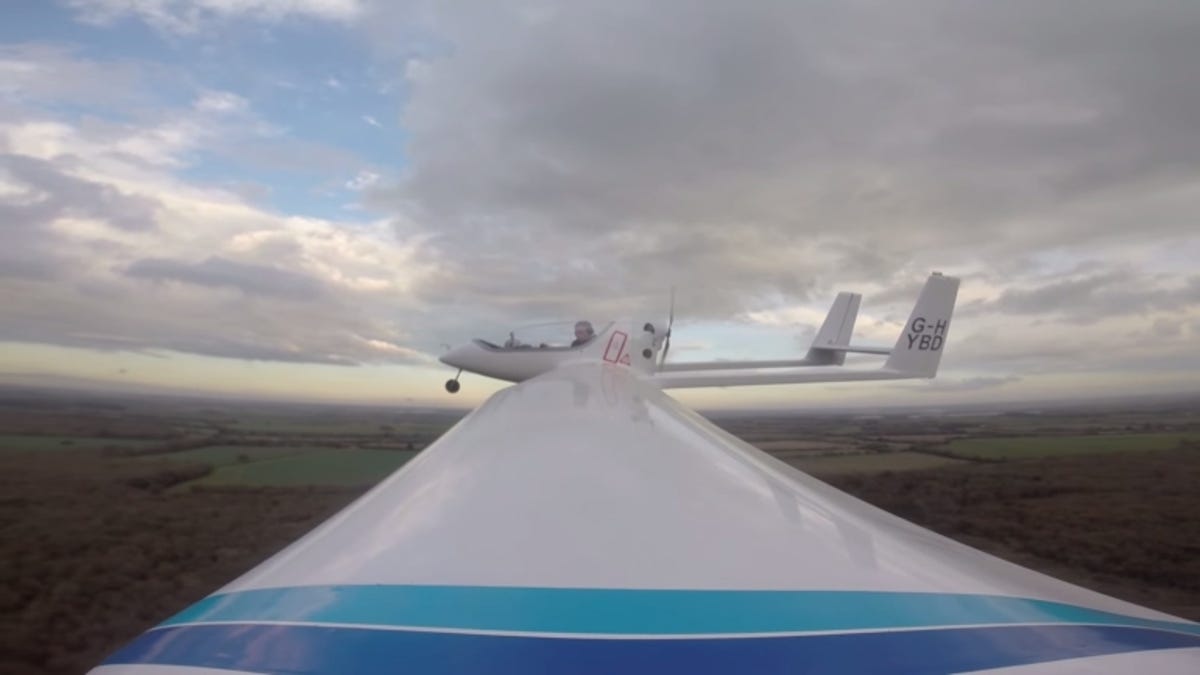
Screenshot by Michelle Starr/CNET
Engineers around the world are seeking to address our reliance on fossil fuels before they become too scarce or carbon emissions have an irreparable effect on the environment by developing a variety of sustainable solutions, such as solar panels, wind farms and ocean turbines.
Related articles
- An electric plane and Boeing’s Dreamliner star at Farnborough (photos)
- A car that’s also a boat, airplane, and helicopter
- Meet the AeroMobil 3.0, a crazy beautiful flying car
Vehicular engines were a little trickier, but hybrid engines which combine fossil fuels with electricity are on the rise. And now, someone has put one in an airplane (which is great, because airplanes produce a lot of CO2 emissions).
A team of researchers from Boeing and Cambridge University have successfully tested the world’s first aircraft powered by a hybrid engine, and not just any hybrid engine, either. It’s a parallel hybrid engine capable of recharging as the plane flies.
The plane in question is a single-seat light plane, weighing in at just 140 kilograms (309 lb) without pilot or fuel, and its hybrid engine uses up to 30 percent less fuel than a petrol engine in a comparably sized plane.
“Although hybrid cars have been available for more than a decade, what’s been holding back the development of hybrid or fully-electric aircraft until now is battery technology,” said project leader Dr Paul Robertson of Cambridge’s Department of Engineering. “But with the advent of improved lithium-polymer batteries, similar to what you’d find in a laptop computer, hybrid aircraft (albeit at a small scale) are now starting to become viable.”


Screenshot by Michelle Starr/CNET
The engine itself is based on a Honda engine, and combines a four-stroke seven-kilowatt piston engine with a 10 kilowatt electric motor and generator, coupled through one drive pulley to spin the plane’s propeller. Like an electric car, during cruising, not much power is required to keep the craft running.
The electric motor can be switched into motor assist to minimise petrol use, or switched into generator mode, allowing the 16 lithium-ion polymer batteries built into the plane’s wings to recharge.
During take-off and climb, the most power is required, and this is when both engine and motor work the hardest.
The test flights took place at Sywell Aerodrome, near Northampton in the UK. First, the team “hopped” the plane along a runway, testing its take-off and landing capabilities. This was followed by more extended flights at altitudes of up to 460 metres (1,500 ft), where the team was able to log the plane’s performance.
In its current form, though, the technology simply isn’t viable for anything aircraft with a take-off weight of more than 450 kilograms (992 lb). According to Dr Robertson, a commercial airliner running on batteries would have a total of around 10 minutes flying time.
“Our mission is to keep our sights on finding innovative solutions and technologies that solve our industry’s toughest challenges and continually improve environmental performance,” said Boeing’s Marty Bradley. “Hybrid electric is one of several important elements of our research efforts, and we are learning more every day about the feasibility of these technologies and how they could be used in the future.”




